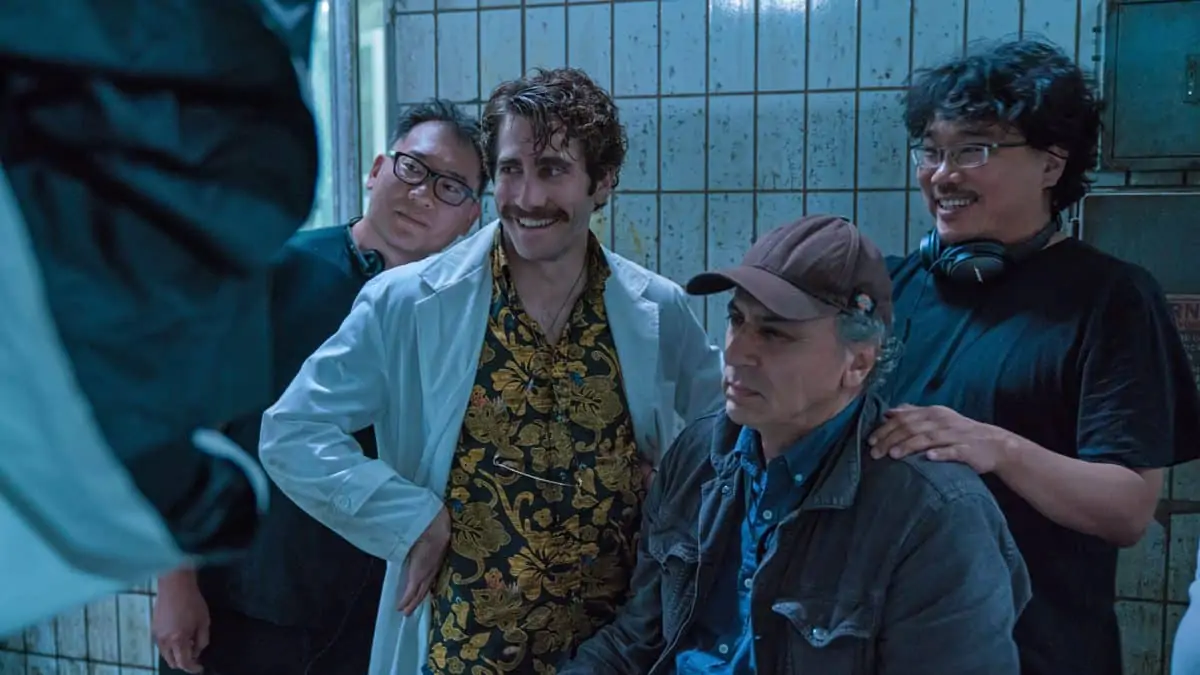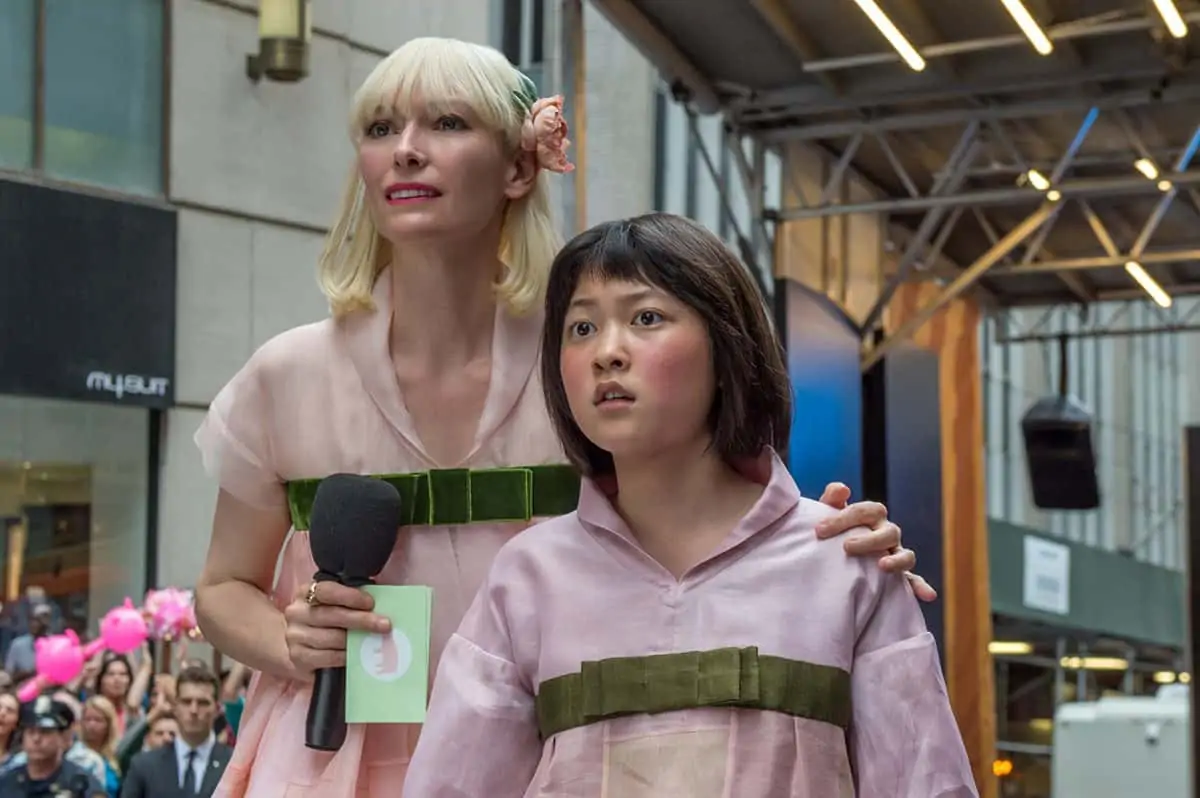Globe trotter
Darius Khondji AFC ASC / Okja

Globe trotter
Darius Khondji AFC ASC / Okja
BY: Ron Prince
Okja is no ordinary pet. She’s a six-ton ‘super piglet’, and is both cherished and adored by Mija, a 14-year-old orphan who lives with her grandfather in blissful, mountainous, farm country in South Korea. However, the trouble is that Okja is a new, genetically-modified species, bred as part of a ‘special competition’ to feed the world by more eco-friendly and economic means. All of a sudden, Mija's idyllic world is turned upside down when Okja is carted-off to New York by her creator, corporate CEO Lucy Mirando, who has sinister plans for her porcine creation.
Mija follows Okja to Mirando’s corporate offices in Seoul, only to find her best friend being pig-napped by an eco-terrorist group hell-bent on destroying the company and its leader. Joining forces with the gang, Mija embarks on an audacious mission to rescue the beloved beast and bring her home.
Although the appearance of the Netflix logo drew derisory boos from cinema purists attending the movie’s 2017 Cannes Film Festival premiere in 4K, the $50m production has since attracted highly-favourable reviews, including special mentions for its cinematographer Darius Khondji AFC ASC, whose work has been hailed as a vivid delight.
“Okja works as a fast-moving action comedy and a critique of modern business ethics, and I absolutely loved the script,” Khondji remarks. “It reminded me of Miyazaki and his dreamy Manga animated tales, of which I am a big fan, whilst carrying strong political content and saying something important about ecology.”
Bong and Khondji had originally wanted to shoot Okja on 35mm film, their preferred cinematic medium, but Netflix insisted on a 4K shoot and finish. Apart from this stipulation, the director and his cinematographer had carte blanche over every other aspect of the production, which commenced in April 2016.

“We accepted the challenge and the experience, and agreed to shoot Okja digitally at 4K,” says Khondji. “I have shot all but one of my features on film, Michael Haneke’s Amour, and was never completely satisfied with the results. So Okja set me on a course of finding the best combination of camera and lenses – something beautiful.
“Initially, I started thinking about shooting with Alexa in Open Gate mode but, at 3.2K, that camera did not quite meet Netflix’s 4K specification. I did not want to shoot this movie with Red, and whilst I like the 16-bits and colour space of the Sony F65, it is a big camera and I knew it would be too bulky to carry around the dense forests and mountainsides in Korea. Plus, we needed two cameras on this shoot.”
Consequently, Khondji turned his attentions to the then newly-released Alexa 65, and the opportunity to shoot at full 6.5K. “I had used a prototype Alexa 65 in 2015 on an art installation called The Crowd, by Philippe Parreno, which showed at The Armory in New York, and loved the results. So I started asking around to discover which other cinematographers were using it on motion pictures and their experiences.”
With positive reassurances about the Alexa 65 filtering back from the likes of Bob Richardson ASC, who was well into production on Live By Night, Emmanuel Lubezki AMC ASC on The Revenant, Greg Fraser ACS ASC on Rogue One: A Star Wars Story, and Michael Seresin BSC ASC on War For The Planet Of The Apes, Khondji had the confidence to commence nighttime driving and stage-set camera tests in Los Angeles, using a range of large format lenses. In the end, he selected Panavision Primo 70s, deeming them to have the most suitable, atmospheric look which also, after special tuning by Dan Sasaki, would mitigate any video aesthetic by delivering a softer overall image.


Khondji’s focus puller Eric Brown helped to oversee the prep and shipment of the camera and lens package to South Korea. During the LA prep, Khondji also worked with Shed colourist Yvan Lucas – who later graded the 4K SDR and HDR deliverables – to create one main LUT for the production. Bong will separately strike film prints from the 4K SDR version for film-projected screenings around the world.
While the vast majority (95%) of Okja was shot using the Alexa 65, Khondji was granted a special dispensation from Netflix, to shoot certain action scenes using an Alexa Mini or Sony A7s – due to camera positions that might have put the more expensive camera equipment at risk of damage.
Okja shot for four months in South Korea – chiefly in remote, forested mountain locations, followed by a brief stint in Seoul. The production then relocated for a two-week shoot on the streets of Lower Manhattan, plus a brief studio shoot, before culminating in a five-week shoot at locations around Vancouver, and a final studio shoot – making for 77 shooting days in total, spread across a four month period.
Regarded as a master of light on celluloid, Khondji says his lighting approach did not especially change with the Alexa 65. “I went mostly with natural, available light on the location scenes in South Korea, New York and Vancouver, typically rating the camera at 800ASA. If I ever needed any additional illumination, this was generally bounced-light, coming off 20x20ft unbleached muslin screens, which is very soft and added a subtle warmth. For the city scenes in Seoul and New York, they were naturally top-lit because of the tall buildings.”
"They (Netflix) gave us complete creative control and creative freedom to make Okja the way we wanted. I would definitely work with them again: they are passionate and love cinema."
- Darius Khondji AFC ASC

To capture the vibrancy of nighttime Seoul, Khondji rated the camera at 2500ASA. “I wanted the images in these scenes to have lots of detail and to look extra-luminous, which the A65 achieves very nicely. I have to say, that the Alexa 65 is an addictive camera. Whilst I still love and advocate film, it’s very interesting how the Alexa 65 reproduces and transposes reality, and it would be my preference for my next digital projects.”
On the lighting front, the biggest challenge for Khondji, and his gaffer Frans Wetterings III, came during the New York scenes, which included a street parade of the pig on a float. Due to limited production time in Lower Manhattan, additional footage – mainly mid-shots and close-ups – had to be shot afterwards on stages in both New York and Vancouver, with the same lighting characteristics to create a seamless join.
“Reproducing New York daylight on a gigantic scale was exciting, but not an easy undertaking,” Khondji recalls. “Through his diligent observations of the real daylight, Frans and his team pre-lit the different stages, using huge light boxes that incorporated ARRI Skypanels and a variety of other fixtures above the set, to emulate the look of the original live action. We also bounced light into the scenes from the floor as required. It was quite a test for us all, but I am very pleased with the results.”

As six-ton piglets do not yet exist – nor would one particularly want to work with the creature if it did – the porcine production moments were shot with a variety of reference “stand-ins” raging from appropriately-shaped and sized aluminium structures, to stuffed animatronic heads, feet and rear-ends, and even a full-sized mock-up, which could contain a pair of specialist VFX performers, akin to those inside a pantomime horse.
Regarding the 4K SDR screening of Okja at Cannes, Khondji remarks, “The final production is very high-key, dynamic and visually electric – very different to most of my features, which are much softer and were mostly shot on film. Nonetheless, it was spectacular and a beautiful experience. Netflix realised Bong is a great director and, apart from the stipulation to shoot 4K, they gave us complete creative control and creative freedom to make Okja the way we wanted. I would definitely work with Netflix again: they are passionate and love cinema. Anyone who boo’d at the Cannes premiere is missing the point. Cinema is in constant mutation. Today you can watch a movie projected on the big screen, on a TV set and even on a mobile phone. That’s the modern reality of visual entertainment. We all have to evolve, as long as we keep our integrity.”



